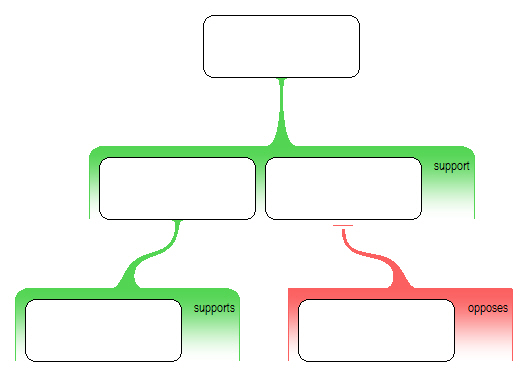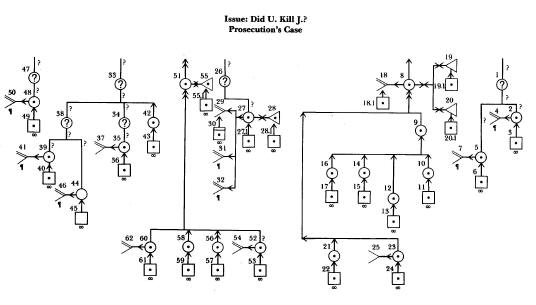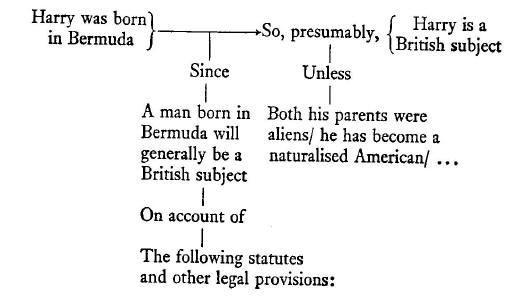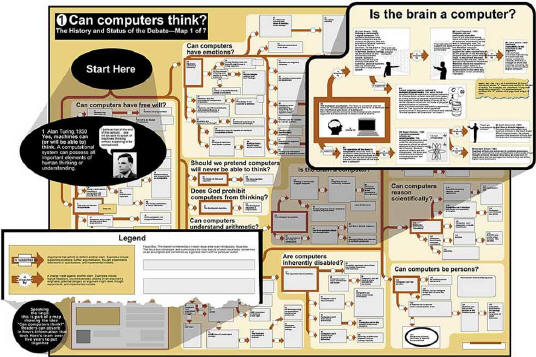Argument mapping is the graphical display of the structure of reasoning and argumentation. Typically, argument maps are box-and-arrow diagrams, a bit like flowcharts. Argument mapping belongs to a family of "thought mapping" techniques which includes concept mapping and mind mapping. Argument mapping is distinctive in focusing exclusively on reasoning or argument structure, and is specialized for that purpose.
Argument mapping can traced back to the work of Charles Wigmore, who in the early part of last century produced maps of complex legal argumentation.
In 1958, philosopher Stephen Toulmin published The Uses of Argument, which presented a simple argument mapping schema. This work has had quite an influence.
In the 1990's, with the arrival of personal computers and graphical software, argument mapping has started to become more widely used. One of the leaders in the field is Stanford University scholar Robert Horn, who has produced argument maps of very complex debates.
The most recent development has been the development of quality software tools dedicated to producing argument maps, such as Rationale.

As you can see from these examples, there are many different kinds of argument mapping. What they have in common is the graphical display of evidential relationships - that is, how some things are evidence for or against others. Argument mapping is a form of intelligence enhancement or augmentation. Using graphical techniques, it extends the power of the brain to process complex reasoning by allowing the brain to apply more of its resources.
More information on argument mapping Follow these links for more general information about argument mapping.
- Argument Map in Wikipedia
- The Homepage of Robert Horn
- Visualizing Argumentation: Software Tools for Collaborative and Educational Sense-Making, a book with chapters from many leading figures in the field.
- Argumap, an email discussion forum for people interested in the theory and practice of argument mapping.
- Rationale, a leading software for argument mapping from which this material is drawn (https://www.rationaleonline.com/docs/en/tutorials#jahecm)


